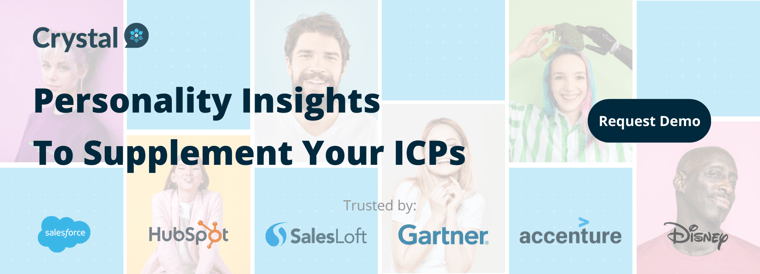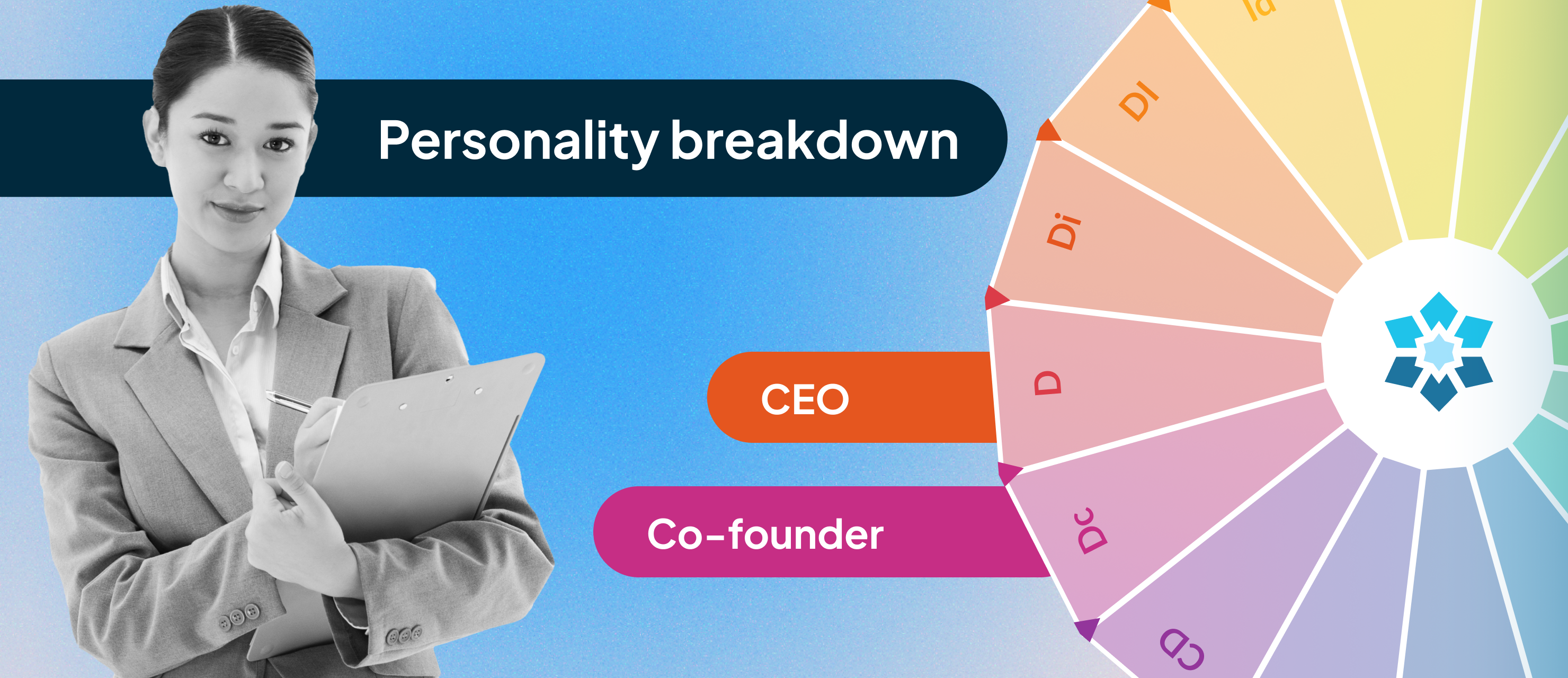
Welcome to the Secret Sauce, a series by the Crystal team where we have deep-dive conversations with fast-rising sales leaders to learn about the most unique, potent ingredient to their success.
 Paul Heywood, Chief Revenue Officer at Puppet and Partner at B2B SaaS focused Venture Firm York IE, is a seasoned expert in scaling technology sector businesses. He serves as Chairmen of Memory.AI and sits on the board of Internet insights provider IPInfo and leading digital agency UNRVLD. Paul has also been featured in publications such as Forbes, Tech Radar Pro, InfoSecurity, and The Wall Street Journal, has spoken at conferences around the world such as IPEXPO, The Next Web, Velocity, and DMEXCO, and has appeared on programs such as ITV News and BBC World News as a technology authority covering global technology events.
Paul Heywood, Chief Revenue Officer at Puppet and Partner at B2B SaaS focused Venture Firm York IE, is a seasoned expert in scaling technology sector businesses. He serves as Chairmen of Memory.AI and sits on the board of Internet insights provider IPInfo and leading digital agency UNRVLD. Paul has also been featured in publications such as Forbes, Tech Radar Pro, InfoSecurity, and The Wall Street Journal, has spoken at conferences around the world such as IPEXPO, The Next Web, Velocity, and DMEXCO, and has appeared on programs such as ITV News and BBC World News as a technology authority covering global technology events.
We sat down with him to learn more about the importance of customer-centricity related to determining Ideal Customer Profiles (ICP) and its necessity for an effective go-to-market strategy.
Right off the bat, Paul emphasized that identifying an ICP is an essential part of discovering product-market fit. Whether you are a founder who has quit your day job to chase your dream or are operating a multi-billion dollar revenue company launching new products, determining ICP is a core ingredient to success in all scenarios and stages. According to Paul, the idea of customer-centricity must be a company-wide initiative to yield the best results in enabling your employees and the market you are looking to impact.
“A company is only as good as the platform it provides to customers. Therefore, an entire company needs to be aligned behind its mission.”
Traditionally, a company would build a product to solve a problem and then hand that product over to a sales organization to get ahead of a buyer and build value throughout a sale. People often refer to these first few sales hires as hero sellers because they can create one-off deals with little customer reference or brand awareness. Now, companies have much more optionality around how their products reach their desired users. Products increasingly reach users through established self-service channels such as marketplaces, developer-focused APIs, and self-service SaaS applications or product downloads via eCommerce.
To support different go-to-market models, such as SaaS, product-led growth (PLG), or direct sales, Paul recommends the entire company orientate around them. For example, the finance department needs to understand the difference between license software and SaaS to understand how the efficiency they create in internal processes could enhance the customer experience and journey. The compensation team and plan must focus on the difference between incentivizing a consumption-based pricing model versus large, monolithic, relationship-based enterprise sales. With so much optionality, products are interchangeable– a company builds customer value via the platform it provides to customers. Therefore, an entire company needs to be aligned with its mission.
To meet customers where they are and get them to where they need to be, you must take them on a journey down whatever the path to value is relative to your product. To do so, you need to understand who to target and when and where to target them:
Do you target someone in their moment of pain?
Do you target a company when they’re in a moment of transformation?
Do you reach out to someone in their moment of research?
When you can understand who you are targeting and the ideal moment to do so– when propensity is highest– you can start building a company around the best way to deliver that value. Clearly mapping activities against the desired outcome or set of events is key to driving and tracking scale.
| Core questions to ask when making decisions or determining ICPs: |
|
For example, Puppet primarily focuses on Global 5000 heavily-regulated industries because they understand that their technology lends itself to problems at scale, problems with complexity, and the added pressure of compliance. Yes, other customers benefit from their solutions; however, they orientate product development, use case development, and selling styles around driving value for those more complex use cases (because that is where they can provide the most value).
Paul emphasizes how crucial it is to be agile when considering ICPs, as the personas you are trying to attract can change. Many companies focus on the individual contributor or practitioner you want to solve pain for. However, if you can drive efficiency and gains across multiple contributors, you will have an ROI that is more relevant and interesting to a manager of teams.
Eventually, if you have enough practitioners or teams leveraging a technology or a problem, you can move your product up to higher levels of leadership. When you are engaged with a broad workforce and have different personas within that ICP, you can focus on business-level outcomes. Paul points out that typically at this point, many companies will switch to an enterprise sales model. Take companies like Amazon, for example, which has a large enterprise selling team that it didn’t have a decade ago. Now, Amazon has so much consumption that it can drive business-level outcomes and must attach itself to a business-level agenda. Because the ICP and agenda can evolve, being in touch with that evolution and being intentional about it is key.
"Just like your product or portfolio, your ICP is allowed to evolve over time."
Although the ICP may change over time, the problems your intellectual property solves rarely change. You should still have defined value drivers that solve the biggest problems for the market you intend to serve. It’s who within that customer base that you are hitting. Understanding this as a company-wide initiative, and being agile, is instrumental in keeping everyone within the sales team and the larger organization on the same page.
For example, Puppet segments its customer base into a maturity model built around the amount of their technology that users have deployed at that point in time. In the early days of product adoption for Puppet, they focused on the practitioner and how they likely are leveraging their technology to solve a specific problem. In scenarios such as this, it is most important to educate and enable the practitioner to identify the next problem they can solve with their technology. This drives engagement and the consumption of the technology as a result.
Once customers get larger, Paul suggests switching to a value-selling journey. If automating infrastructure, there are significant ROIs. Expanding too early is a big mistake because you don’t have the critical mass with usage to drive that ROI. You must wait.
By understanding where and how your product can offer the most value, you can more successfully determine a solid ICP and better understand your customer at scale. By then making the ICP and the idea of customer-centricity a company-wide initiative rather than merely a sales priority, organizations can better support their company mission and different go-to-market models to drive value and success.
To determine a more comprehensive ICP, and maintain a customer-centric business model, it can also be helpful first to develop a deeper understanding of the customer. Utilizing tools such as Personality AI can aid in understanding key motivators and communication styles for the targeted personas of the ideal customer. By considering the personality of the targeted persona, you can create more effective strategies for outreach, messaging, pitches, and more.
Begin using Personality AI by getting started with Crystal for Sales today.









